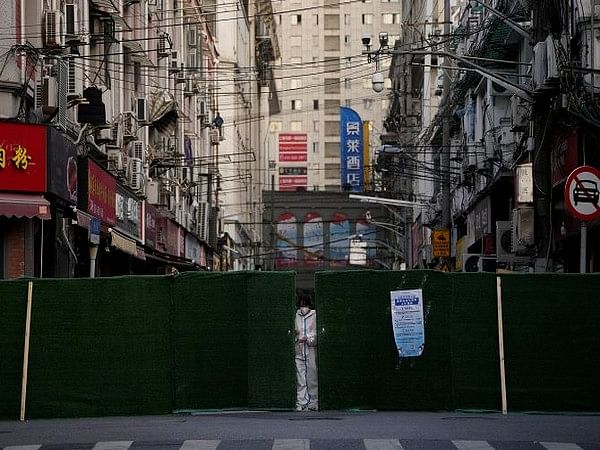Beijing [China], July 26 (ANI): China’s National Immigration Administration (NIA) will continue to adjust entry-and-exit control measures in line with the changing COVID-19 situation to fulfil the need for cross-border travel, a spokesperson said Tuesday.
The immigration administration work will also continue to facilitate enterprises’ production and operation to promote the country’s opening-up, as well as international exchanges and cooperation, said Zhang Ning, the spokesperson for NIA, reported Xinhua.
Currently, with routine COVID-19 control measures in place, China’s immigration authorities process exit and entry certificates in a timely manner for people whose overseas travel is necessary, Zhang said.
The purposes of travel include COVID-19 prevention and treatment work, participation in key engineering projects, the transportation of production and daily necessities, business, employment, production, scientific research, overseas study, examinations, academic exchanges, seeking medical treatment, visiting family and relatives, looking after the elderly, pregnant or lying-in women, attending the next of kin’s wedding ceremony or graduation ceremony, family reunion and dealing with overseas emergencies, among other matters.
For extremely urgent matters, express services will be provided. According to data unveiled Tuesday at an NIA press conference, the number of cross-border travellers recorded by China’s immigration authorities in the second quarter of 2022 was 32.29 million, up 5.64 per cent quarter on quarter, as per the media portal.
An expert from the Chinese Center for Disease Control and Prevention (CDC) said that more subvariants have emerged during the new round of outbreaks, such as BA.2, BA.4 and BA.5, and the fact that they are more transmissible and harder to find poses challenges for the country’s COVID-19 control efforts, Global Times reported.
Provincial-level regions such as Anhui, Guangxi and Gansu became the latest hotspots. Anhui’s Sixian, which witnessed a spike of cases in early July, resumed normal life and production last week, but other small cities in Anhui, such as Bengbu’s Huaiyuan county, are still struggling with the increasing cases.
Epidemiologists said this new wave is challenging the coping ability of more inland and small cities, which are not as well equipped as metropolises, and emerging subvariants of Omicron further press anti-virus efforts as they spread faster and are harder to detect, the Global Times reported.
Previously, from July 2 to 11, over 300 cases were reported every day. Some 199 confirmed cases and 539 silent carriers were reported on Tuesday.
The CDC expert said that compared with previous outbreaks since March, the latest outbreak exposed a new trend, that is the infection has sneaked into inland and small cities.
“Compared with cities such as Shanghai, Beijing and Jilin, which faced the severest onslaughts during the last round of outbreak, those that are seeing a surge this time are less equipped medically, and in a poorer condition to cope with the virus,” he added.
Apart from large-scale outbreaks in small cities, big cities such as Shanghai and Tianjin also reported an increase in the cases in recent days, the expert said.
A new subvariant of Omicron BA.2.12.1 was found in Chengdu, capital of Southwest China’s Sichuan Province, said Chengdu’s health authorities on Sunday, noting it is 1.2 times as transmissible as BA.2, and no homologous sequence was found in the Chinese mainland.
Recently, around 500 people were found infected with COVID-19 over five days at a tourist resort in China’s Guangxi region. Global Times reported that the outbreak left over 2,000 tourists stranded in Beihai city due to a coronavirus flare-up that hit the holiday resort.
The city of Beihai located in the south of Guangxi is one of the most popular tourist resorts in the region.
According to the local health commission of Guangxi, a number of cities including Beihai, Nanning, Guilin, Hezhou and Chongzuo have been affected by the outbreak.
The new wave of COVID-19 cases has been triggered by new emerging Omicron sub-variants, with nine such sub-variants all classified as forms of Omicron reportedly having been spreading among 12 regions since July, Global Times reported.
Recently, China enforced a lockdown in Xian, home to 13 million people after the city reported the first cases of a new Omicron subvariant. The lockdown was implemented after Xian reported 18 COVID-19 infections, all of which are of the Omicron BA.5.2 subvariant, according to local disease control officials.
BA.5.2 is a sub-lineage of BA.5, which is already dominant in the US and appears to escape antibody responses among both people previously infected with COVID-19 and those who have been fully vaccinated and boosted, according to researchers.
It is the first time the subvariant has been reported in China, one of the last places in the world still adhering to a stringent zero-Covid policy. Due to the latest outbreak in Beijing, millions of people are facing mandatory testing and thousands are under targeted lockdowns, just days after the city started to lift widespread curbs that had run for more than a month to tackle a broader outbreak since late April. (ANI)
This report is auto-generated from ANI news service. ThePrint holds no responsibility for its content.



